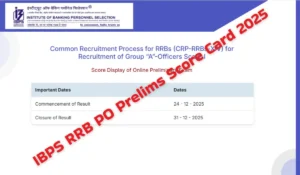Q1. निम्नलिखित में से कौन सा समूह पशु कोशिकाओं में मौजूद है?
(a) माइटोकॉन्ड्रिया, कोशिका झिल्ली, कोशिका भित्ति, साइटोप्लाज्म
(b) क्लोरोप्लास्ट, साइटोप्लाज्म, वैक्यूल, न्यूक्लियस
(c) न्यूक्लियस, सेल मेम्ब्रेन, माइटोकॉन्ड्रिया, साइटोप्लाज्म
(d) रिक्तिका, कोशिका झिल्ली, नाभिक, माइटोकॉन्ड्रिया
(e) उपरोक्त में से कोई नहीं
Q2. कणों के बीच टकराव में संवेग संरक्षण को इस आधार पर समझा जा सकता है:
(a) न्यूटन की गति का पहला कानून
(b) केवल न्यूटन का गति का दूसरा नियम
(c) न्यूटन का गति का दूसरा नियम और न्यूटन का गति का तीसरा नियम दोनों
(d) ऊर्जा का संरक्षण
(e) उपरोक्त में से कोई नहीं
Q3. जन्तुओं में कोशिका विभाजन की किस अवस्था में प्राय: साइटोकाइनेसिस होता है?
(a) प्रोफेज
(b) मेटाफ़ेज़
(c) अनाफेज
(d) टेलोफेज
(e) उपरोक्त में से कोई नहीं
Q4. द्वितीयक वृद्धि में भाग लेने वाली कोशिकाओं को नाम दिया गया है-
(a) फ्लोएम
(b) जाइलम
(c) कैम्बियम
(d) मेडुलरी किरण
(e) उपरोक्त में से कोई नहीं
Q5. द्रव की बूंद का गोलाकार आकार ग्रहण करने की प्रवृत्ति होती है, क्योंकि
(a) सतह तनाव
(b) चिपचिपा बल
(c) गुरुत्वाकर्षण बल
(d) केन्द्रापसारक बल
(e) उपरोक्त में से कोई नहीं
Q6. मेसन द्वारा खोजा गया था
(a) पॉवेल
(b) सीबर्ग
(c) एंडरसन
(d) युकावा
(e) उपरोक्त में से कोई नहीं
Q7. निम्नलिखित में से कौन संपर्क बल नहीं है?
(a) धक्का बल
(b) गुरुत्वाकर्षण बल
(c) घर्षण बल
(d) तनाव बल
(e) उपरोक्त में से कोई नहीं
Q8. पत्ती और तने जैसे कुछ भागों में लचीलेपन की प्रचुरता को जिम्मेदार ठहराया जा सकता है-
(a) पैरेन्काइमा
(b) कोलेन्काइमा
(c) स्क्लेरेन्काइमा
(d) जाइलम और फ्लोएम
(e) उपरोक्त में से कोई नहीं
Q9. निम्नलिखित में से किस एक में एंटीबॉडी का निर्माण होता है?
(a) आरबीसी
(b) रक्त प्लेटलेट्स
(c) रक्त प्लाज्मा कोशिकाएं
(d) डोनान की झिल्ली
(e) उपरोक्त में से कोई नहीं
Q10. प्रोटॉन और न्यूट्रॉन एक नाभिक में किसके द्वारा बंधे होते हैं-
(a) छोटी दूरी ‘कमजोर बातचीत’
(b) छोटी दूरी ‘मजबूत बातचीत’
(c) लंबी दूरी ‘विद्युत चुम्बकीय बातचीत’
(d) लंबी दूरी ‘गुरुत्वाकर्षण बातचीत’
(e) उपरोक्त में से कोई नहीं
SOLUTIONS:
S1.Ans. (c)
Sol. Nucleus, cell membrane, mitochondria and cytoplasm are present in animal cells.
S2.Ans. (c)
Sol. Conservation of momentum in a collision between particles is dependent on both Newton’s second law of motion and Newton’s third law of motion.
S3.Ans. (d)
Sol. Telophase is the stage where cytokinesis usually occurs in animals, which means the cell divides into two daughter cells and is identical to each other.
S4.Ans. (c)
Sol. Mostly dicotyledonous plants exhibit an increase in girth called the secondary growth. The tissues involved in secondary growth are the two lateral meristems: vascular cambium and cork cambium.
S5.Ans. (a)
Sol. The liquid surface always acquires minium surface area due to surface tension so, the small droplet of any liquid is always spherical.
S6.Ans. (a)
Sol. Meson are sub-atomic particles composed of a quark and an antiquark. Its existence was theoretically predicted by Jakense physicist-Yukawa Hideki, but it was first discovered by English physicist civil Frank Powell in 1947 in cosmic-ray particle interactions. All meson are unstable having lifetimes ranging from 10-8 to less than 10-22 second.
S7.Ans. (b)
Sol. Gravitational force is an imaginary force pulling everything towards the earth surface without any contact to the object.
S8.Ans. (b)
Sol. Collenchymas provides malleability and flexibility to certain parts of the plants. Parenchyma is considered to be the soft tissue which makes most of the cell and sclerenchyma is the dead tissue which makes up fibre and provides rigidity to the cell.
S9.Ans. (c)
Sol. Blood plasma cells form 55 – 60% by volume of blood. Antibodies and some other substances such as lysozyme and properdin always occur in the plasma. They serve to destroy bacteria, viruses and toxic substances that may enter into the blood from outside or from body tissues.
S10.Ans. (b)
Sol. The force between protons and neutrons in the nucleus is short range strong interaction.



 IBPS RRB PO Prelims Score Card 2025 Out:...
IBPS RRB PO Prelims Score Card 2025 Out:...
 EMRS Cut Off 2025: देखें एक्सपेक्टेड और ...
EMRS Cut Off 2025: देखें एक्सपेक्टेड और ...
 EMRS Answer Key 2025: चेक करें आधिकारिक ...
EMRS Answer Key 2025: चेक करें आधिकारिक ...








